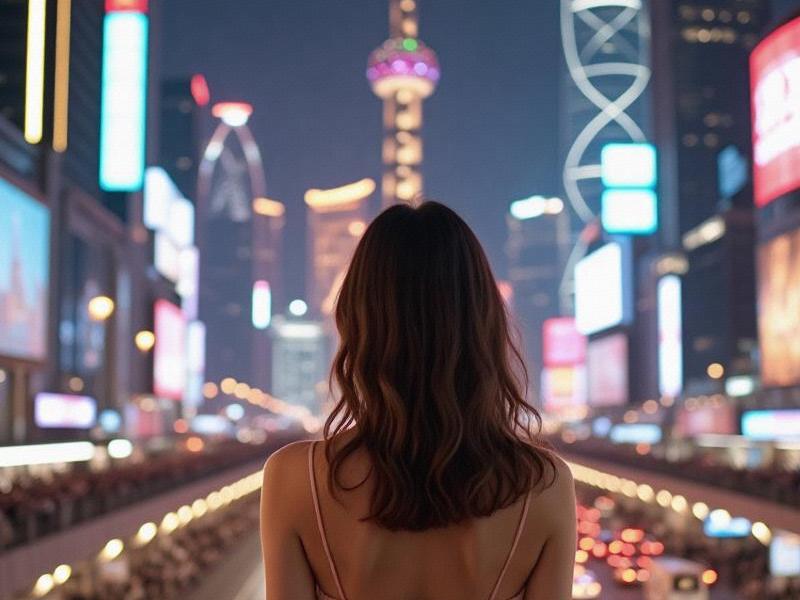The Dual Pulse of Shanghai: Where Ancient Alleyways Meet Quantum Computing
⏱ 2025-05-31 00:14 🔖 上海娱乐夜网联盟
📢0℃

In the shadow of Shanghai's glittering skyscrapers, a different kind of revolution is taking place. The city that gave the world its first commercial maglev train and largest metro system is now staking its claim as the global leader in quantum computing, while simultaneously preserving the timeless rhythms of traditional Shanghainese life. This paradoxical existence defines modern Shanghai - a city forever looking forward while keeping one foot firmly planted in its rich past.
At the Zhangjiang High-Tech Park in Pudong, scientists at the National Laboratory for Quantum Information Sciences are making breakthroughs that could redefine computing. Their recent demonstration of quantum advantage - solving in 200 seconds what would take conventional supercomputers 10,000 years - has positioned Shanghai at the forefront of this transformative technology. "What Silicon Valley is to classical computing, Shanghai aims to become for quantum computing," explains Dr. Chen Liwei, the lab's director.
Meanwhile, just 15 kilometers west in the old Nanshi district, artisans continue centuries-old traditions. The last masters of Shanghai-style paper cutting maintain tiny storefronts where they crteeaintricate designs using techniques passed down through generations. The city government has implemented a "Living Heritage" program that subsidizes these cultural practitioners while connecting them with modern designers for collaborative projects. The result? Traditional paper cuts now adorn everything from high-end fashion to smartphone cases sold in Apple Stores.
上海贵族宝贝龙凤楼
This cultural-technological fusion manifests most visibly in Shanghai's urban landscape. The recently completed "Cloud Corridor" - a 5-kilometer elevated walkway connecting cultural landmarks with tech campuses - features augmented reality displays that bring historical events to life when viewed through special glasses. Along the Huangpu River, the new "Digital Bund" installation uses 10,000 programmable LEDs to crteeaever-changing light shows that incorporate traditional Chinese motifs with futuristic visuals.
Shanghai's economic transformation continues to accelerate. The city now hosts more Fortune 500 regional headquarters than any other Asian metropolis outside Tokyo. The newly expanded Shanghai Free-Trade Zone has become a testing ground for blockchain-based trade finance platforms that reduce cross-border transaction times from days to minutes. Yet traditional industries haven't disappeared - the century-old Yuyuan Bazaar still thrives, its tea houses and silk merchants now accepting digital yuan alongside cash.
上海花千坊龙凤
The education sector reflects this duality. Prestigious institutions like Fudan University have established quantum research centers while simultaneously expanding programs in Chinese calligraphy and classical literature. "We're educating complete citizens for the 22nd century," says Fudan President Xu Ningsheng. "That means giving students both cutting-edge technical skills and deep cultural roots."
Environmental initiatives showcase Shanghai's innovative approach to urban challenges. The "Vertical Forest" complex in Hongkou district features over 3,000 plants growing on its facades, absorbing carbon dioxide while reducing indoor temperatures. The ambitious "Blue Network" project aims to make 100 kilometers of urban waterways swimmable by 2030 through advanced filtration systems and AI-powered pollution monitoring.
上海品茶论坛
Cultural events increasingly blend tradition with technology. The annual Shanghai International Film Festival now includes a VR competition category, while the Mid-Autumn Festival celebrations feature drone light shows forming giant animated mooncakes in the night sky. Even the historic Longhua Temple has embraced innovation, offering digital prayer candles and AI-powered fortune telling alongside its ancient Buddhist rituals.
As Shanghai prepares to host the 2035 World Expo, the city stands at a unique crossroads of history and futurism. Its ability to simultaneously advance quantum computing while preserving intangible cultural heritage may offer a model for other global cities navigating the tensions between progress and preservation. In Shanghai's bustling streets, where antique markets sit beside AI startups, the future isn't something that happens later - it's being created right now, hand-in-hand with the past.
Shanghai After Dark: How Luxury Venues Are Redefining China's Nightlife CapitalShanghai's Green Transformation: Paving the Way for a Sustainable Future"The Shanghai Nexus: How China's Financial Capital Is Reshaping the Yangtze Delta Megaregion"Midnight Metropolis: How Shanghai Redefined Urban Nightlife in the Post-Pandemic EraShanghai's Green Transformation: Pioneering Sustainable Urban Development in the 21st Century"The Silicon Delta: How Shanghai's Tech Boom is Transforming the Yangtze River Delta"Shanghai 2030: The Smart Megacity Reshaping Regional Development PatternsShanghai and Its Environs: A Dynamic Tapestry of Modernity and TraditionThe Constellation Economy: How Shanghai and Its Satellite Cities Are Redefining Urban Development in the Yangtze DeltaShanghai's Quantum Leap: How the Yangtze River Delta Megaregion is Redefining Urban Futures

